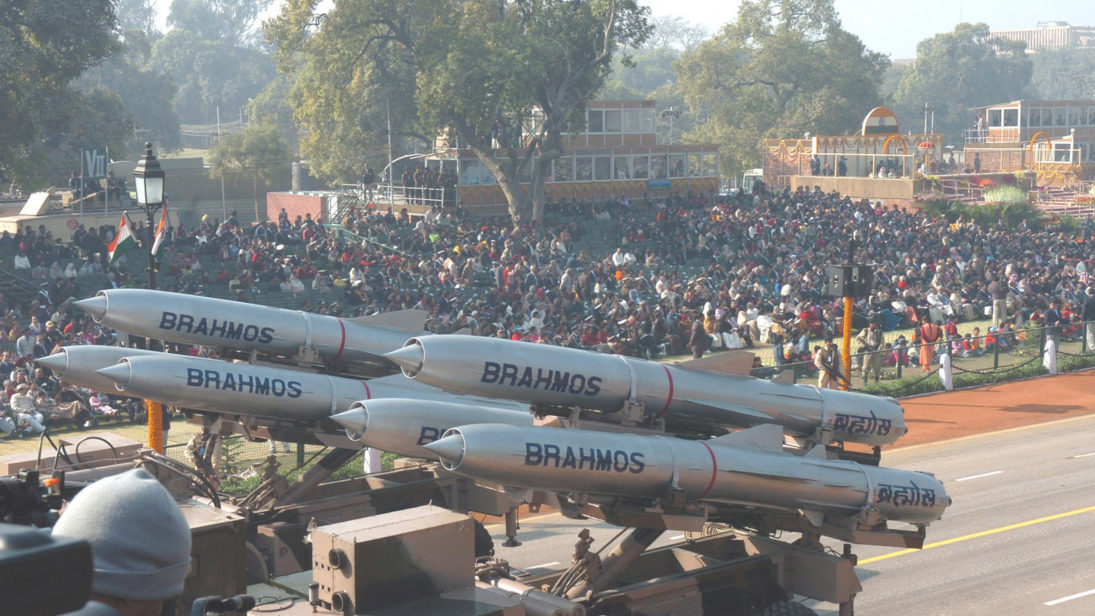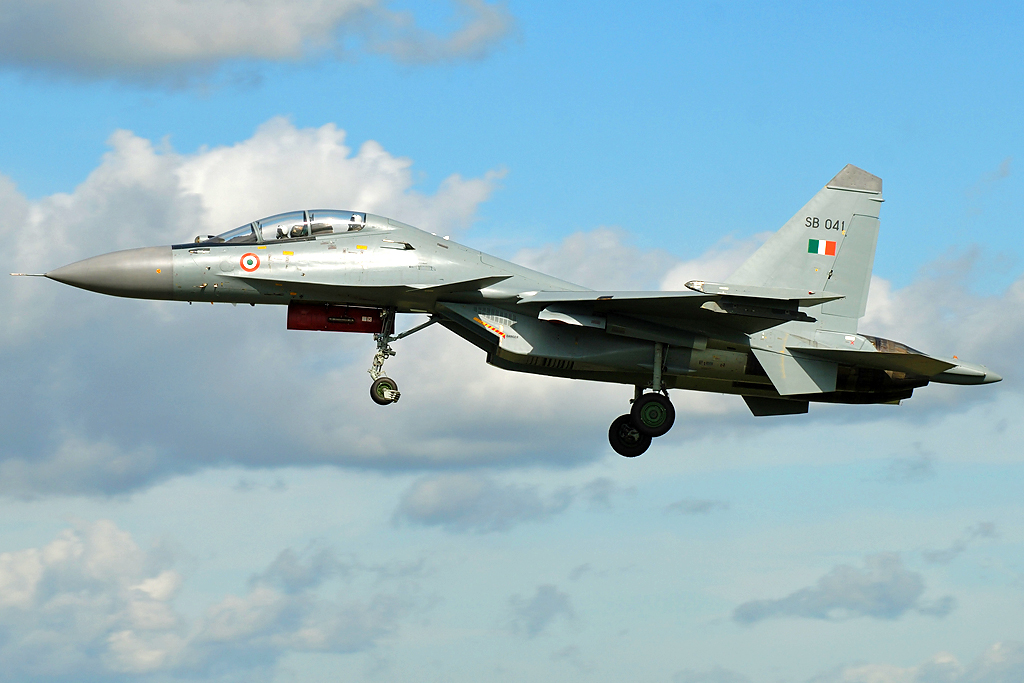
Since the early 2000s, the BrahMos missile system has made India’s military arsenal a formidable one. A product of a joint Indo-Russian initiative, the weapon allows India to deliver a payload at Mach 2.8 to 3 velocity from 300 to 400 kilometers away. In fact, it is considered to be the world’s fastest supersonic cruise missile. India’s current inventory includes land, air, ship, and submarine-launched variants of BrahMos, which has, to this point, been classified as a conventional missile by the Naval Air and Space Intelligence Center (NASIC).
Given the nuclear capabilities of China, along with the technological feasibility of delivering a nuclear warhead with the weapon system, it is likely that India will add nuclear capability to BrahMos to fulfill its deterrence requirements against China. In turn, Pakistan may perceive this development as an Indian attempt to pursue a counterforce strategy, which could then motivate Pakistan to move towards a state of ready deterrence.
Threat Motivators
India’s threat landscape is dominated by China and Pakistan, but it appears that its nuclear competition with China has motivated India’s development of the BrahMos missile. Chinese nuclear doctrine espouses a No First Use (NFU) pledge, but it has invested in ballistic missile defense (BMD) technologies and a sea-based anti-missile system. After India’s test-launch of the Agni-V intercontinental ballistic missile (ICBM) in January, Chinese military analysts asserted that Beijing carried out a test of its anti-missile system in order demonstrate that it is capable of intercepting Indian missiles in the mid-course phase. This has caused some concern in New Delhi, where some have alleged that Chinese BMD capability “erodes the value” of India’s nuclear deterrent.
To counter China, India has two options: first, it could develop Multiple Independently-targeted Reentry Vehicle (MIRV) capability that can overwhelm the missile shield. However, this may be a less appealing course of action, given India’s limited fissile material stock and the threat of the interception of warheads before the terminal phase. Thus, it seems likely that India will develop a nuclear-tipped BrahMos missile capable of penetrating Chinese missile shields, thus fulfilling India’s deterrence requirements.
Taking Aim at China
In terms of missile technology, BrahMos is an advanced and versatile delivery system that is aimed at overwhelming China’s BMD capability. It employs a two-stage propulsion system – the first using a solid propellant and the second, a liquid fuel, air-breathing ramjet engine. As a terrain-hugging missile, BrahMos can fly circuitous paths at supersonic speeds, making it extremely difficult to intercept.
In terms of missile technology, BrahMos is an advanced and versatile delivery system that is aimed at overwhelming China’s BMD capability.
There are improvements in the works that will make the missile even more formidable. The pursuit of a hypersonic version, capable of achieving velocities of Mach 5 to 6, has led India to make efforts towards replacing the missile’s ramjet system with a Supersonic Combustion Ramjet (scramjet) engine. Although India maintains segregation between its civilian space technology and military programs, it is noteworthy that the Indian Space Research Organization (ISRO) has already successfully tested the scramjet engine. This hypersonic version, due to its extreme velocity, would be virtually impossible for any Chinese missile defense system to intercept.
India’s 2016 induction into the Missile Technology Control Regime (MTCR) removed restrictions on Category-1 items (systems capable of 300 km range/500 kilogram payload or more), which allowed for the production of an extended-range (400km) BrahMos. It was successfully tested in March of 2017, and is slated to have an increased range of around 800-1000 kilometers. The system’s extended range covers almost all of China, albeit with slightly reduced accuracy.
The ever-versatile BrahMos missile is capable of being launched from air, land, and sea. The Sukhoi-30 MKI, an aircraft capable of launching the BrahMos, has an operational range of 3600 km, which aerial refueling can augment. Notably, the refueling and deep-strike capabilities were also validated during the recent Gaganshakti 2018 exercise conducted by the Indian Air Force (IAF). India’s induction into the MTCR opened the door for vast improvements in the BrahMos, and its integration with the Su-30 MKI affords the range capability to deliver a warhead to target major population centers and economic hubs deep in Chinese territory.

Implications for Pakistan
In the triangular nuclear dynamics of South Asia, the nuclearization of the cruise missile will also impact Pakistan, which maintains an ambiguous doctrine with no commitment to NFU and fields tactical nuclear weapons (TNWs). A nuclear-tipped BrahMos would create an additional option for India in targeting Pakistan’s tactical nuclear weapons batteries, with implications on Pakistan’s perception of India’s nuclear doctrine and strategy.
One aspect of the BrahMos missile that makes it worrisome for Pakistan is its ability to attack targets with pinpoint precision, since the accuracy of the missile could potentially be used for counterforce targeting. Not coincidentally, India has successfully deployed a navigation system based on the Indian Regional Navigation Satellite System (IRNSS), which boasts the ability to position within 20 meters of a target.
The penetrative impact of a weapon increases due to high kinetic energy, and with BrahMos, a warhead travelling at Mach 3 velocity will generate nine times more force for the same object as at Mach 1. In this way, BrahMos can effectively neutralize heavily-fortified targets, such as “…headquarters or tactical nuclear weapon batteries, enemy airfields or high-value strategic infrastructure.” This, coupled with the missile’s precision strike capability, makes BrahMos an ideal missile to penetrate hardened structures.
Though India is only aiming to fulfill its deterrence requirements vis-à-vis China, the above features of the BrahMos cruise missile gives India a powerful option against Pakistan’s TNWs, if it should choose to do so. However, Pakistan could perceive this development as a threat to its nuclear arsenal potentially move towards a state of ready deterrence in which it mates its warheads with delivery vehicles.
Potential Hurdles
Two issues still require India’s attention as it contemplates moving towards a nuclear BrahMos. First, Brahmos, being a collaborative project, necessitates Russian consent. Notably, India has locally developed and successfully tested a seeker (responsible for tracking the target) for the missile that guides it during the terminal phase (the final phase of a missile’s flight trajectory). The indigenous components of the BrahMos missile allow India more say in comparison to Russia over the collaborative project. However, since Russia still supplies the propulsion system of BrahMos, their consistent is necessary if India is to nuclearize BrahMos.
Second, if India aims to outfit 40 Su-30 MKI platforms with the aerial version of the BrahMos (approximately 12% of the 312-jet fleet), this presents a problem of ambiguity for the adversaries. In a crisis situation, it will not be known if the incoming Su-30 MKI carries a nuclear-tipped BrahMos or a conventional missile. This may present the adversary with a “use it or lose it” dilemma, which could lead to inadvertent escalation. It remains inevitable that the Su-30 MKI must contend with a hostile and potent air-defense environment before it can launch the Brahmos within the Chinese airspace.
Bolstering Credible Minimum Deterrence
India is capable of arming BrahMos with a nuclear warhead, should it choose to do so. The land and naval version of the BrahMos can carry a 200 kg warhead, while the aerial version can carry a 300kg warhead. It is speculated that India has developed a fission device weighing under 200 kg, with a yield of 12 to 15 kilotons. Moreover, it also appears to have a fission weapon weighing under 300 kg, with a yield of 100 kilotons, which is compatible with the aerial delivery systems.
Pakistan, perceiving this as a step by India towards counterforce strategy, could move towards a state of heightened readiness for nuclear warfighting, which will in turn increase the risks of inadvertent escalation in a crisis.
In light of these technological advancements, the development of Chinese BMD systems in the region will likely incentivize India to field a nuclear-tipped BrahMos. This will bolster the “credible” portion of the “credible minimum deterrence” requirement of the Indian nuclear doctrine. Irrespective of the nuclear BrahMos only fulfilling India’s deterrence requirements vis-a-vis China, Pakistan may feel threatened by this development. Pakistan, perceiving this as a step by India towards counterforce strategy, could move towards a state of heightened readiness for nuclear warfighting, which will in turn increase the risks of inadvertent escalation in a crisis.
Views expressed in this article are the author’s own and do not necessarily reflect those of the organizations with which he is affiliated.
***
Image 1: Public.Resource.Org via Flickr
Image 2: g4sp via Flickr


